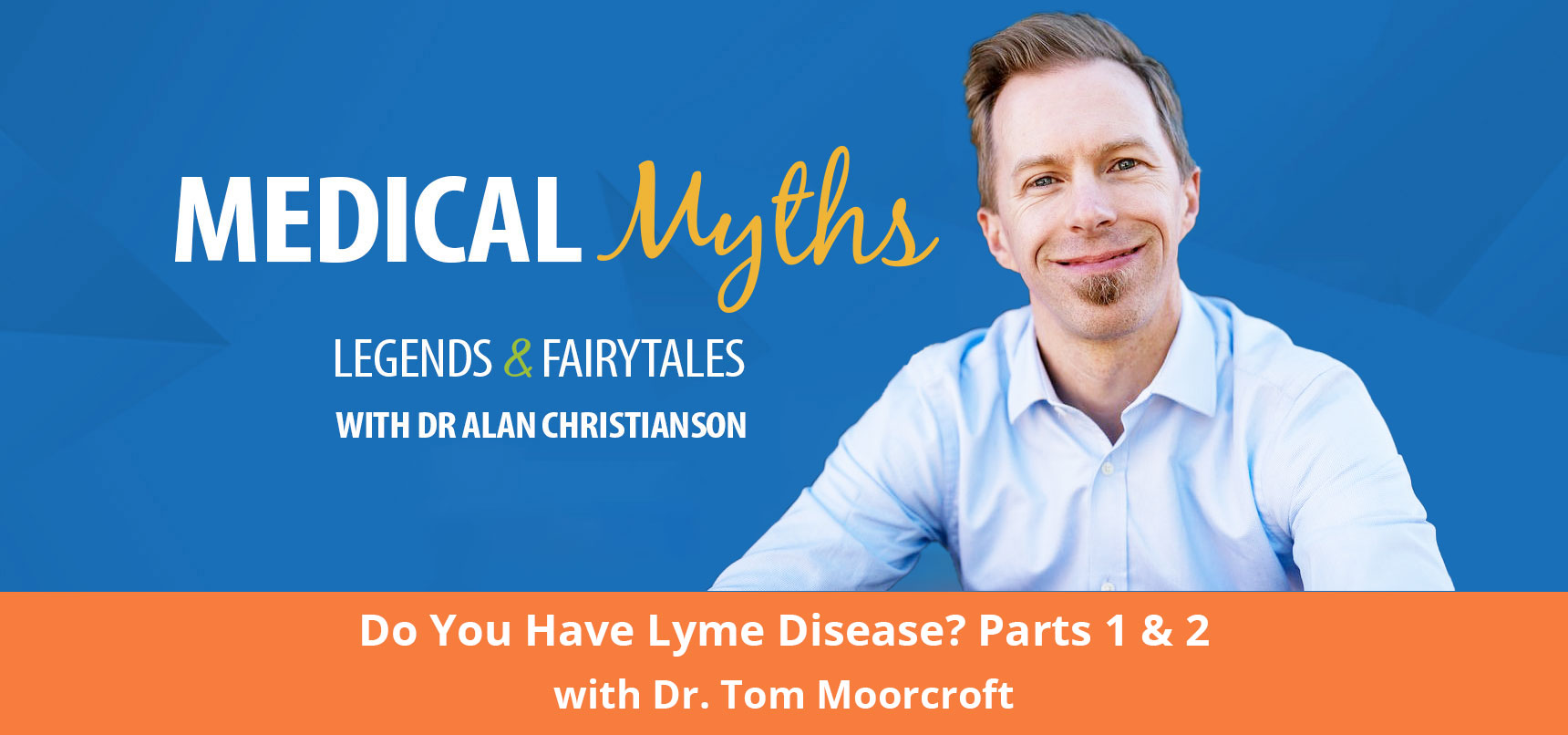Do You Have Lyme Disease? Parts 1 & 2 with Dr. Tom Moorcroft
Description: Between the latest online fads and the crazy media headlines, it’s easier than ever to get confused about your health. If you want to make better decisions about your health today so you can feel better and live longer, you’ve come to the right place.
On this episode we’re diving into one of the most misunderstood diagnoses in the medical field — Lyme disease. Do you think you might have Lyme disease? If you’ve been experiencing symptoms that you haven’t been able to explain or are wondering if Lyme disease might be the diagnosis you’ve been waiting for, then you need to listen to my conversation with Dr. Tom Moorcroft. Dr. Moorcroft is a world renowned expert on Lyme disease who practices osteopathic medicine and focuses his work on finding the true causes behind the symptoms of those who may be suffering from Lyme disease.
In the first part of this episode Dr. Moorcroft will differentiate between patients who may not have Lyme disease but are experiencing it’s symptoms from those who will get the diagnosis and do need to seek further Lyme disease treatment. He’ll answer some of the hard questions about the topic — can Lyme disease be solved? What is the number one symptom that points to Lyme disease over any other symptoms? At what point in treatment can patients reasonably expect to see positive changes in their symptoms? And what is the best approach to your health that will nearly guarantee a fighting chance for your body to heal from this disease? Dr. Moorcroft has seen countless cases of Lyme disease, as well as too many misdiagnoses, in his work and shares many insights into the knowledge that makes him a clear authority on the topic.
In the second part of this episode I will follow up on the conversation I had with Dr. Moorcroft, including research and reference checks, a look at the likelihood of contracting Lyme disease in a non-endemic area, and a list of possible other diseases that your symptoms may indicate you are possibly dealing with instead. I’ve created a flowchart to help you think through the process of further pursuing or rejecting a Lyme disease diagnosis, and I am confident that you will have a greater understanding of the probability of being diagnosed with Lyme disease after listening to this conversation.
Key Takeaways:
[1:10] Today’s topic is Lyme disease — it’s symptoms, causes, and too-often misunderstood diagnosis.
[2:32] Introducing Tom Moorcroft, who differentiates patients who may not have Lyme disease but are experiencing it’s symptoms from those who will get the diagnosis and need to seek further Lyme disease treatment.
[8:05] Dr. Moorcroft explains the importance of prioritizing the multiple stresses that are affecting your health before you begin to treat for Lyme disease.
[13:00] How likely is it for someone without classic exposure to Lyme disease to be diagnosed with it?
[18:06] A look at accuracy and the CDC required time frame for Lyme disease testing and what that can mean for altering effective treatments.
[22:03] Are chronic antimicrobial treatments helpful for potential Lyme disease patients? Dr. Moorcroft explains the effects of a chronic treatment approach and why antimicrobial herbals are even more effective for many of his patients.
[27:33] At what point should a patient stop thinking they have Lyme disease based on test results and symptoms? Dr. Moorcroft shares his standard approach to treatment when there are questions marks in the diagnosis.
[31:25] The danger of assuming that you have Lyme disease, and the importance of seeking out a proper diagnosis no matter what your symptoms are.
[35:18] Wrapping up with Dr. Moorcroft, who shares his personal experience with battling Lyme disease and the three key changes he made to his lifestyle in order to let healing happen.
[38:00] Examining Lyme disease further — are the symptoms alone enough to qualify for a diagnosis of Lyme disease?
[41:48] Follow up on the references that were discussed with Dr. Moorcroft regarding testing time frames, false negatives, and alternative testing options.
[45:18] Ignoring a diagnosis altogether — how effective would antimicrobial treatments be for someone that is showing the symptoms of Lyme disease?
[46:22] Dr. C examines the likelihood of being diagnosed with Lyme disease if you have the symptoms without a tick bite or a rash living in a non-endemic area and having received a false negative test result.
[52:42] A walk through of the potential Lyme disease diagnosis flow chart.
[54:50] What is the likelihood of having a co-infection along with Lyme disease and what would be the appropriate course of action?
[55:39] Potential alternate diagnosis options for someone that has experienced Lyme disease symptoms for a long period of time but has not received the diagnosis.
[59:25] Seeking treatment at your low point means that your reactions are almost guaranteed to make you feel better almost immediately.
[1:03:54] Do you have a topic you’d like me to cover? Contact me on Facebook or Instagram using #medicalmyths.
To learn more:
Lyme Disease Diagnosis Flow Chart
Tweetables:
“We want to advance medicine and help patients get the right diagnosis so they can get the right outcome.” — Tom Moorcroft
“You just can’t make everyone who doesn’t have a clear diagnosis have Lyme disease. That’s just as bad not diagnosing Lyme in someone who clearly has it.” — Tom Moorcroft
“You have the power to make tons of changes in your life, with or without Lyme disease.” — Tom Moorcroft
“Your body can be willing to heal itself, but it’s your responsibility to provide it with the raw materials — the nutrition, the exercise, and the sleep — that’s required to heal.” — Tom Moorcroft
“You want to feel better, and I want you to feel better, but if you treat something that is not the real cause of your pain, you’re going to miss what is the real cause and stress out your body in ways that won’t be helpful.” — Dr. Christianson









